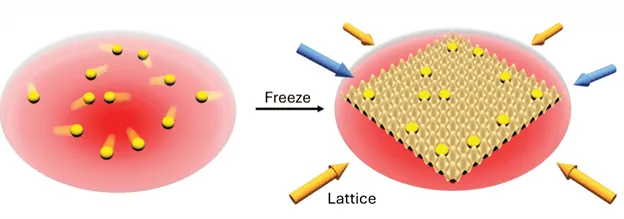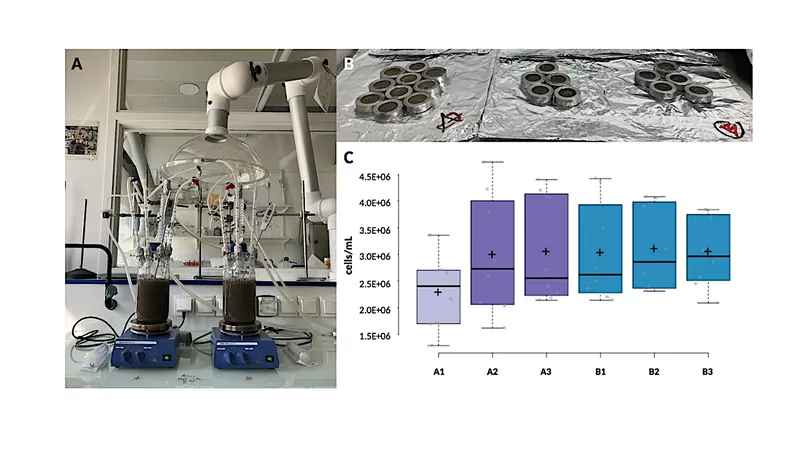
Revolutionary Quantum Gas Insights: Researchers Capture ‘Snapshots’ in Real Space!
2025-07-18
Author: Nur
New Techniques Shed Light on Quantum Gases
In a groundbreaking advance, three independent teams from the US and France have unveiled a novel method to visualize atoms in real, continuous space, rather than being confined to discrete lattice sites. By harnessing this cutting-edge technique, researchers have successfully captured detailed 'snapshots' of various quantum gases, including weakly interacting bosons, non-interacting fermions, and strongly interacting fermions, marking the first-ever experimental measurement of their correlation functions in continuous space.
Understanding the Complex World of Quantum Systems
Quantum many-body systems are notoriously intricate, with properties that defy the conventional single-particle perspective. Theoretical simulations of these systems grow increasingly complex as the number of particles rises, necessitating highly controlled platforms like ultracold atoms in optical lattices to unlock their secrets.
How They Captured the Atoms
The research teams employed similar protocols to freeze atomic motion and document their arrangements. They began by cultivating a dilute quantum gas within an optical trap formed by laser beams. The configuration tightly constrained vertical movement while allowing free flow on the xy-plane. A sudden increase in the lattice strength effectively 'froze' their motion, enabling researchers to record their positions by detecting the fluorescence generated when the atoms were cooled with lasers, allowing correlation measurements to be made.
Revealing the Fermi Gas
One highlight came from a team led by Tarik Yefsah at Paris's Kastler Brossel Laboratory, who explored a non-interacting two-dimensional gas of lithium-6 atoms. By using Raman sideband laser cooling, they managed to visualize the two-point correlator (g2) in continuous space for the first time. This revealed a phenomenon referred to as the 'Fermi hole,' where the probability of finding two fermions in close proximity diminishes, conforming to the Pauli exclusion principle.
How Bosons Behave Differently
Meanwhile, Wolfgang Ketterle's team at MIT focused on the bosonic side, studying how bosons tend to cluster together, especially in a phase known as Bose-Einstein condensate (BEC). Their unique approach allowed them to be the first to measure the correlation length in a two-dimensional ultracold bosonic gas. Notably, they observed a correlation function that changed significantly with temperature, marking the transition from thermal dominance to bosonic behavior.
Interacting Quantum Gases: A Third Perspective
The third group, headed by MIT’s Martin Zwierlein, dove into the interactions between bosons and fermions. Their experiments highlighted the differing tendencies of these particles to cluster together, evidencing an enhancement in pairs for bosons while fermions showed a notable decrease. This exploration into strongly interacting Fermi gases opened avenues into phenomena like the BCS regime, where atoms pair up similarly to electrons in superconductors.
The Quantum Landscape Transformed
These audacious experiments do not just enhance our understanding of quantum gases; they present a transformative toolkit for quantum simulation, paving the way for future research into strongly correlated systems that were previously too complex for classical computation. The implications of these findings could reshape our approach to quantum physics!



 Brasil (PT)
Brasil (PT)
 Canada (EN)
Canada (EN)
 Chile (ES)
Chile (ES)
 Česko (CS)
Česko (CS)
 대한민국 (KO)
대한민국 (KO)
 España (ES)
España (ES)
 France (FR)
France (FR)
 Hong Kong (EN)
Hong Kong (EN)
 Italia (IT)
Italia (IT)
 日本 (JA)
日本 (JA)
 Magyarország (HU)
Magyarország (HU)
 Norge (NO)
Norge (NO)
 Polska (PL)
Polska (PL)
 Schweiz (DE)
Schweiz (DE)
 Singapore (EN)
Singapore (EN)
 Sverige (SV)
Sverige (SV)
 Suomi (FI)
Suomi (FI)
 Türkiye (TR)
Türkiye (TR)
 الإمارات العربية المتحدة (AR)
الإمارات العربية المتحدة (AR)